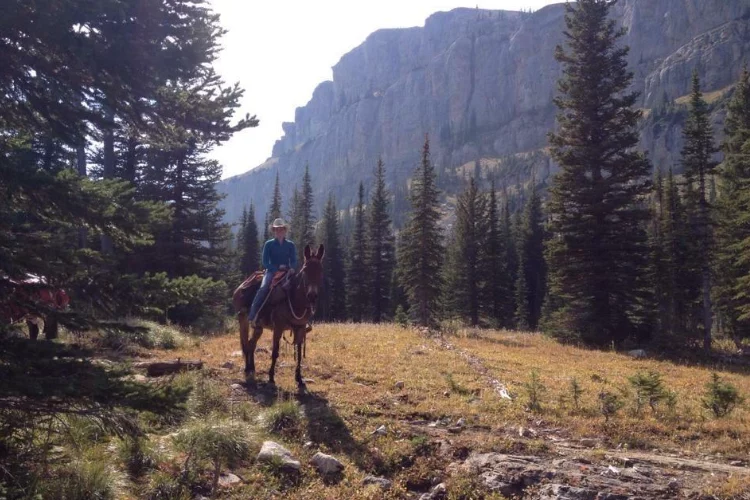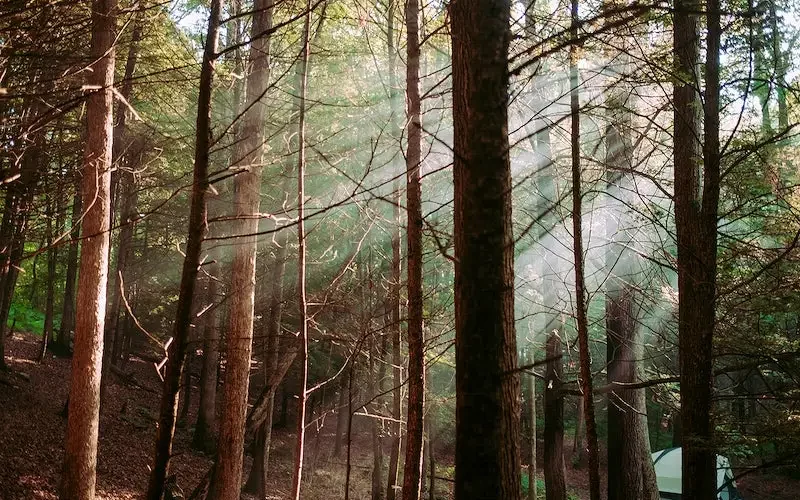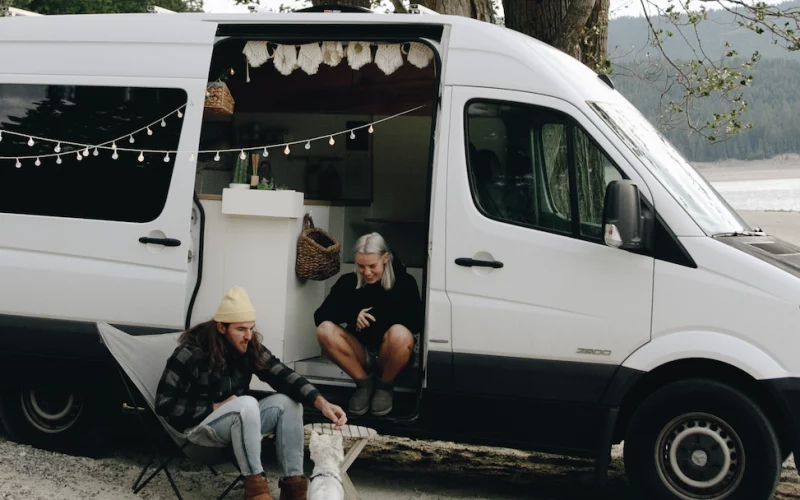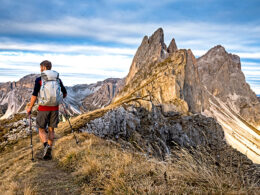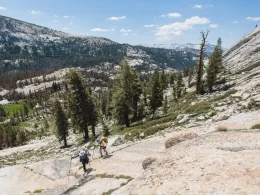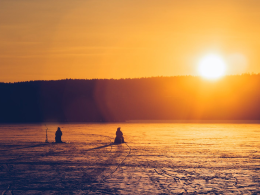The trail around Gibson Reservoir near Augusta, Montana, leads into the heart of the Bob Marshall Wilderness. It follows cliffs that, in areas, drop straight to the reservoir several hundred feet below. It’s a mecca for outdoor recreation, from hikers and backpackers to hunters, kayakers, and anglers.
One summer around the Fourth of July, I led a string of horses and mules out of the wilderness on this trail. As we made our way along the steep cliffs, the horse I was riding spooked at something. It took a moment to realize there were kayaks on the water far below, and he had no idea what they were. As a prey animal, a horse, even the most well-trained, can spook at something so foreign to them. Therefore, it’s critical for people who share trails with livestock, particularly horses and mules, to understand what their riders are dealing with and how to interact safely.
Table of Contents
What types of livestock are used on trails?
The most common livestock you’ll encounter on trails are horses, mules, and the occasional donkey. People typically ride one and sometimes lead multiple horses or mules tied together head to tail, called a “string.” This is a challenging and complex undertaking with many things that can go wrong.
You may also encounter llamas or goats, which are more of a challenge to horse and mule folks than hikers. Of course, people don’t ride these animals, but they do pack them. You’ll find llama strings, while goats frequently run free and follow their handler.
This article will focus on horses and mules, what their owners deal with, and how to interact with them safely. These animals have the highest probability of a dangerous accident if people aren’t careful.
What is the difference between a horse and a mule?
While horses and mules are related, they have different traits that make them desirable for various activities. Mules are a cross between a male donkey (a jack) and a female horse (a mare). These are the most common. However, some people breed female donkeys (jennies, to male horses (studs), resulting in a Hinny. These are far less common.
Horses are prey animals adapted to life on the plains. They are “flight” animals, meaning when they are threatened, they prefer to run. While donkeys are also prey animals, they were native to steep, mountainous terrain. They would likely run right off a cliff if they ran away like a horse, so they evolved to stop, think, and potentially “fight.”
These instincts are prevalent in the mules and horses today and make a difference when selecting animals for use on the trail. A horse’s flight instinct can make them more apt to bolt or do something dangerous, whereas a mule will often stop and think first. However, some (although not all) mules still carry instincts that cause them to want to paw dogs (perceived predators) or other small animals to death. Mules also have an adaptation in their fetlock (ankle) that helps them be more agile in the mountains and rough terrain. This is why mules are popular for steep, rugged terrain.
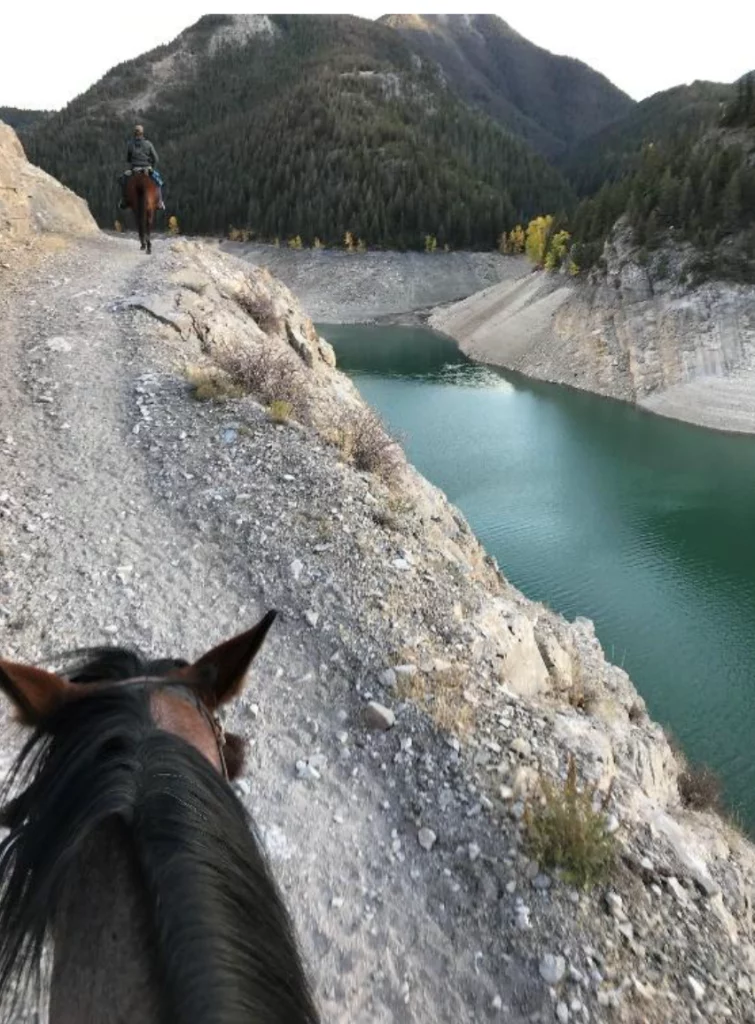
Why do people use horses and mules on trails?
Anyone who has ever hiked or backpacked knows the rewards of getting off the beaten path and away from people. However, this can take a lot of sweat, and perhaps blood and tears, to accomplish. Horses and mules allow for going longer distances in a day. They’re also capable of packing more gear than us mere humans, which allows for more luxurious camps. Hunters love them for packing out big game after a successful hunt. Riding an equine also provides for more sightseeing. The rider is higher up and can look at the scenery rather than watching where they step.
What challenges do horse and mule owners face on the trail?
The challenges horse and mule owners face on the trail are endless and what can go wrong, will.
“Green” Animals
First, horses and mules aren’t born knowing how to do this job. Someone must train them to be ridden and packed, then take them out on the trail to practice. Animals with less experience are called “green broke” and can pose a significant challenge on the trail. Horsemen and women will usually take these green animals out along with more experienced animals. If something scary occurs on the trail, it can help these inexperienced animals stay calm when the more experienced animals (hopefully) respond better.
Spooking
Many things encountered on the trail can spook horses and mules. Each of these animals is a large, living, breathing creature with a mind of its own. They typically weigh anywhere from 1000 to upwards of 1500 or 1600 pounds. A spooked horse or mule that wants to bolt can pose a significant hazard to its rider and bystanders on the ground. Further, when one animal spooks, it also causes others to spook.
Horses and mules each have their own personalities and quirky traits. Some of these traits stem from their training. They can form excellent habits or be traumatized, just like people. One horse may spook at every tree or rock, while others never care or can get over it. Obstacles like bridges can pose challenges, as horses and mules may fear crossing them. This is where taking green animals with more well-trained ones can help show the younger animals it’s okay.
Other things that can spook horses and mules are hikers and backpackers with packs, boats on the water, wild game (dead or alive), tents and tarps or anything similar, llamas, and more! I’ll talk more about llamas later.
Sometimes a very well-trained, reliable animal will spook out of the blue. Therefore, there is no such thing as a “bomb-proof” animal, and stock owners must always be cautious of what is happening around them.
Injuries and Colic
The potentially unpredictable behavior of horses and mules isn’t the only challenge owners face. These animals are prone to colic or get hurt.
Often, spooking and getting hurt go hand-in-hand. Owners must carry vet kits and a plan for getting animals out of the mountains if they get hurt. Many owners pack a handgun capable of putting an animal out of its misery should it be badly hurt and unable to get to the trailhead.
Colic can also be life-threatening, causing severe stomach and intestinal issues due to a change in feed, eating something poisonous, or becoming dehydrated. Getting horses and mules to drink enough water in a new place, even working and sweating, can be difficult.
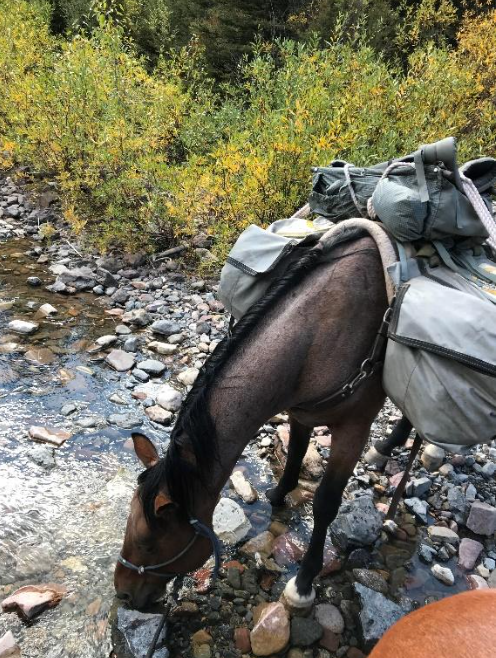
Inexperienced Riders
Another challenge trail users may face is inexperienced horse and mule owners. While it is best if people know what they are doing, there are always those that don’t. Just know they exist and follow proper etiquette with everyone you encounter.
Proper trail etiquette around horses and mules
As you can see, livestock owners face many challenges on the trail. While the rewards are worth it, many things can happen with these large free-thinking creatures. Other trail users can help significantly in keeping everyone safe.
Don’t come up behind them too fast or close
The first thing other trail users can do is give livestock a wide berth. If you are coming up behind them, do it slowly. Try alerting the riders to your presence; however, yelling suddenly or being too loud can spook the animals in the rear and cause a horse wreck. If you are on a mountain bike, stay even further back.
You will know if an animal is uncomfortable with your presence because it may begin to prance and try to turn around and look at you. If you see this happening, please back off significantly and be patient. Hopefully, the rider can find a spot to get off the trail far enough to allow you by. Riders should communicate with you but may not. But please, don’t rush or try to get around them, as you could put yourself and the riders in significant danger.
Give horses and mules the right-of-way
Horses and mules have the right-of-way on the trails. Remember a few key things when getting off the trail to allow them by. First, step off on the downhill side if you can. That way, if one of the animals spooks at you as they go by, they will move towards the uphill side rather than the more dangerous downhill side.
Step off the trail properly
Next, if you have a large pack on, don’t take it off. Backpacks on the side of the trail can easily spook horses and mules. So keep them on, step far enough off that you don’t risk getting stepped on but where the animals can still see what you are. I recommend talking to the riders as they approach and go by. This is so the horses and mules know you are a person, not a bear or other predator.
If you are on a mountain bike, pay attention to what is ahead of you. Stay off popular livestock trails if you can because bikes and horses don’t mix. I was once riding a mule that jumped and bucked off the trail at the sight of mountain bikes approaching us. Had I been a more inexperienced rider, I could have come off and been seriously hurt. Bike riders should dismount and step off the trail like backpackers. Laying your bike down and standing in front of your bike can be helpful, as well as talking to the riders.
Don’t wave things around
Waving items like jackets, sweatshirts, tarps, or tents, even unintentionally, will likely cause a horse or mule wreck. While livestock owners work with their stock on these things to train them not to be scared, someone doing it on the side of the trail can still cause these animals to panic. So keep these things put away or stop packing your tent if horses and mules are going by.
Give horses and mules a wide berth if you have llamas or goats
Llama packers should also be very cognizant of horses and mules. Most equines get pretty freaked out about llamas, potentially causing a severe wreck. It is best if you can get your llamas far off the trail. But no matter how far away you get, if the horses and mules can see you, they’ll be spooked. Also, don’t come up behind horses and mules with your llamas. Since you’ll likely lead them on foot, riders should move faster.
It’s worth noting that goats aren’t as scary to horses and mules. However, as previously mentioned, some mules may instinctively want to trample these smaller animals, viewing them as predators in their mule brains. Do not allow your goats to run amongst a horse or mule string if they are free. This will likely cause a significant wreck and be extremely dangerous for the big animals and the goats.
Keep your dogs under control
As with the goats, please keep your dogs leashed or under voice control around horses and mules. While most of these animals are used to dogs, you never know if some aren’t. Your dog could easily spook them, causing them to buck or bolt. Additionally, as stated above about goats, some mules may want to trample your dog to death.
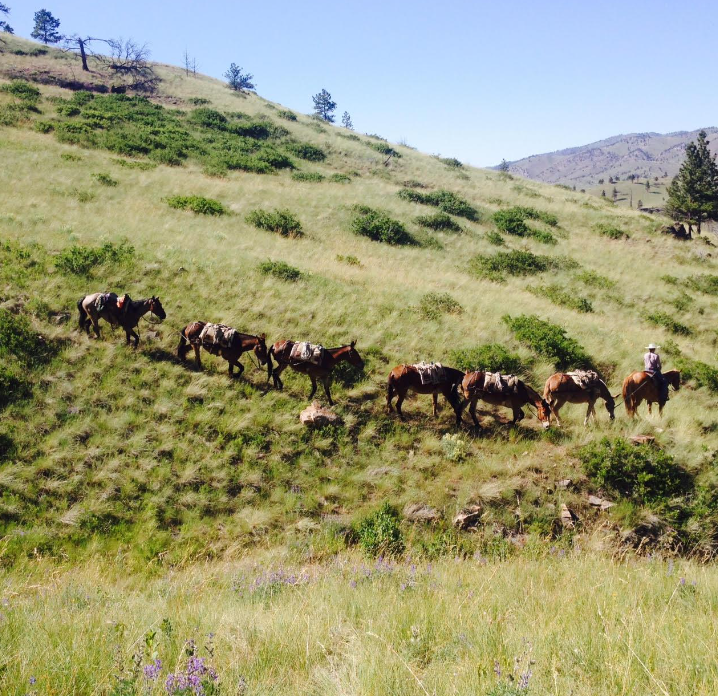
Respect and communication will go a long way
With some understanding of what horse and mule owners deal with, sharing the trails can be a rewarding experience for everyone. Educating yourself on proper trail etiquette and respecting livestock owners and their directions can go a long way in keeping everyone safe.
If a rider becomes tense with you, know they are likely stressed about keeping their animals, themselves, and you safe. Listen to their instructions and do what they ask since they can read their animals and understand what they will probably do.
Plenty of respect and communication will ensure your good time on the trail stays that way.

